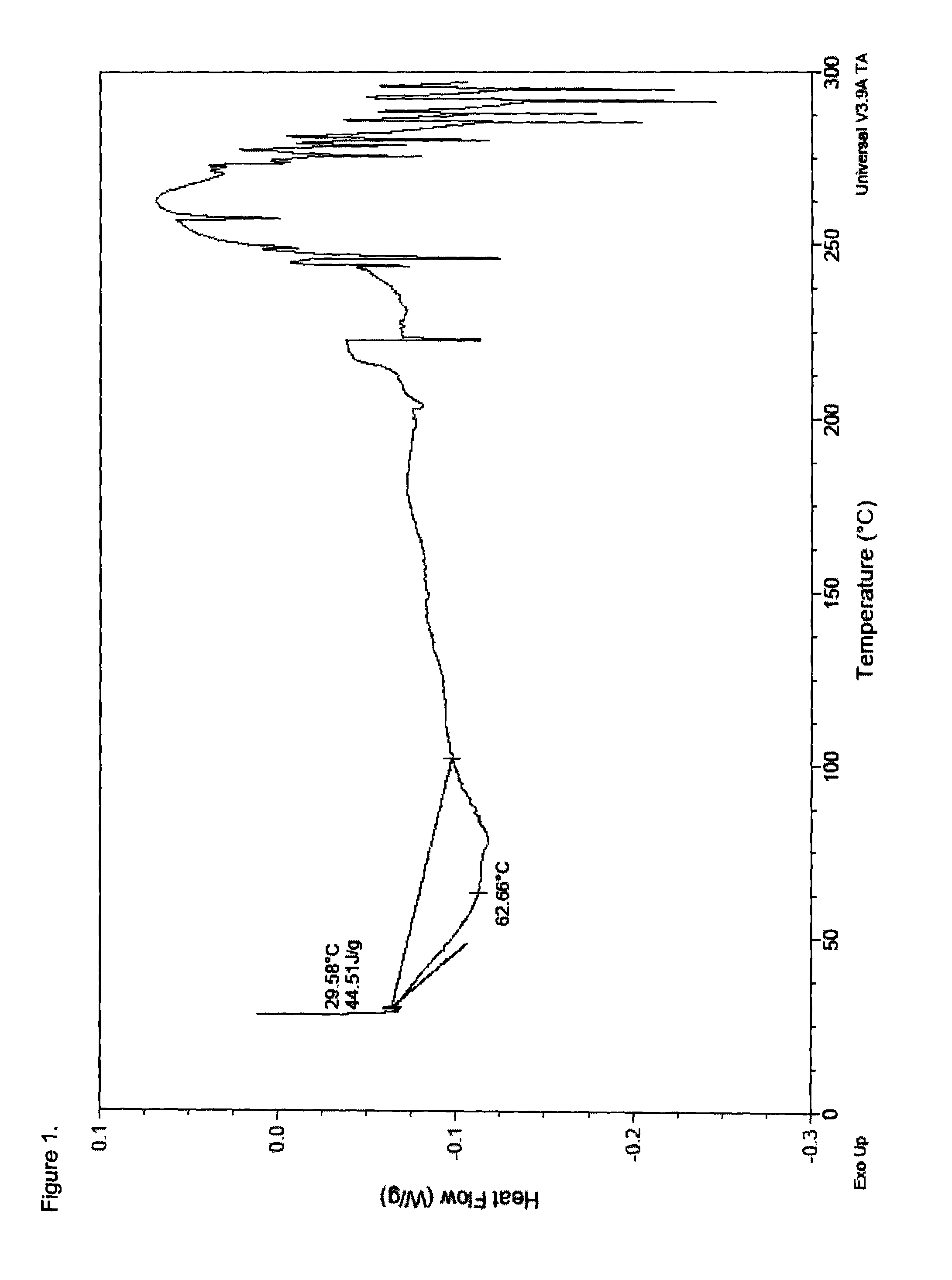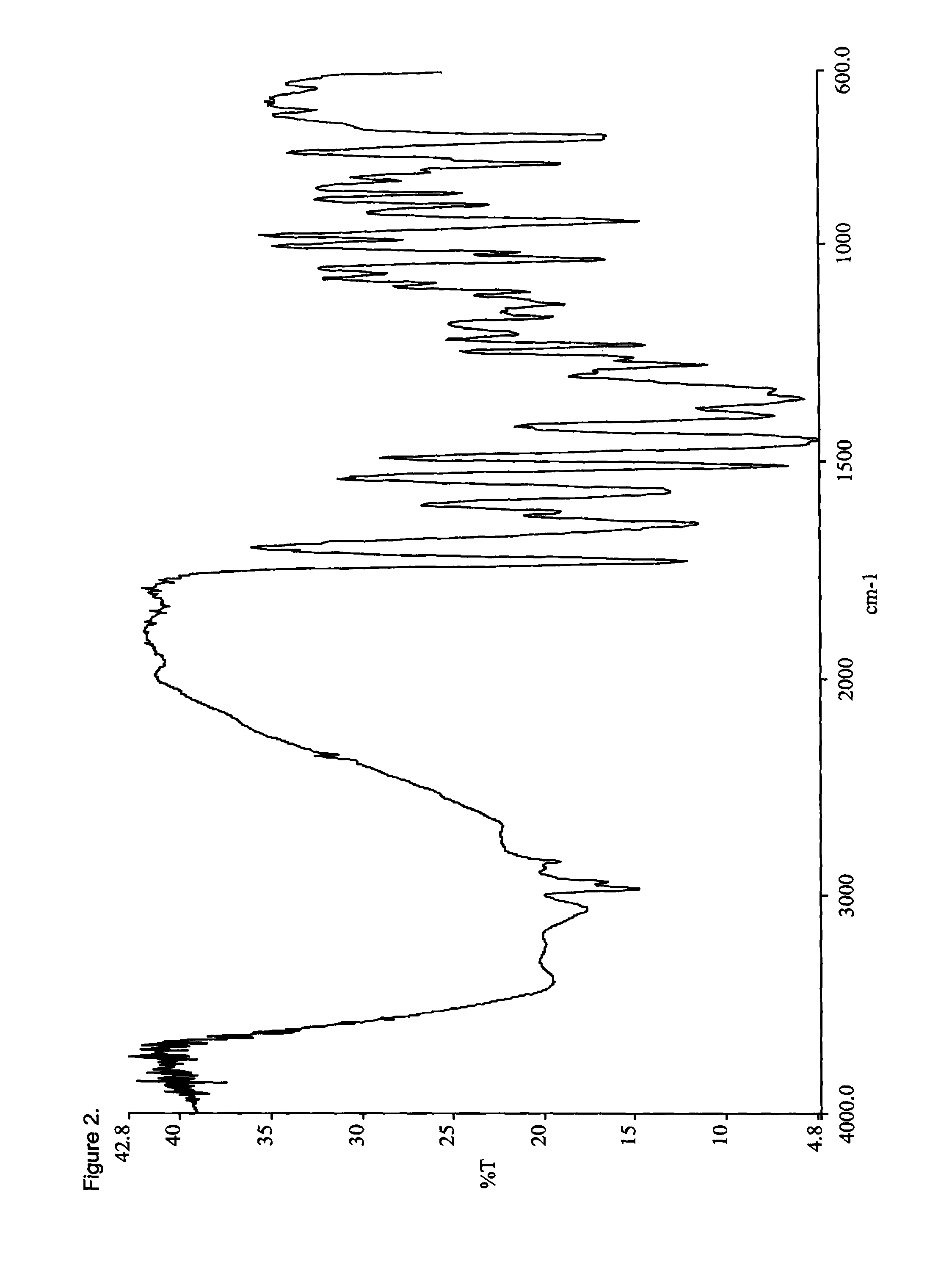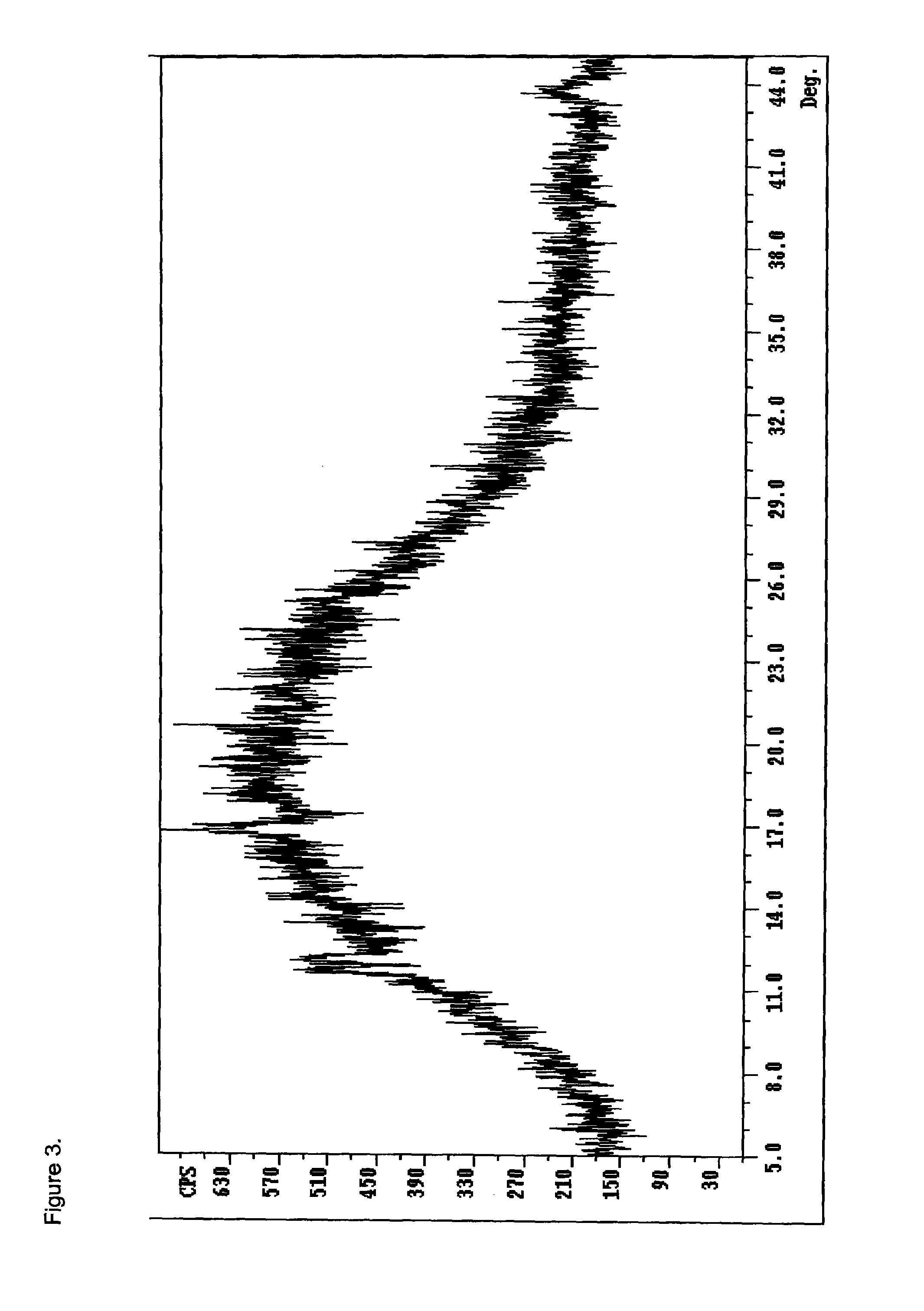Opioid salts and formulations exhibiting anti-abuse and anti-dose dumping properties
a technology of anti-abuse and anti-dose dumping, which is applied in the direction of heterocyclic compound active ingredients, biocide, organic chemistry, etc., can solve the problems of significant economic burden on society, significant risk of overdose, abuse and addiction, and serious affecting the general health condition of the nation's society
- Summary
- Abstract
- Description
- Claims
- Application Information
AI Technical Summary
Benefits of technology
Problems solved by technology
Method used
Image
Examples
example 1
Preparation of Oxycodone Free Base
[0280]To a 150 mL beaker was charged 10.0 g oxycodone hydrochloride and 100 mL water. Concentrated ammonium hydroxide (2.6 grams) was then added to bring the pH to approximately 9. The product was collected by vacuum filtration, washed with cold water and dried for about 5 hours under vacuum to provide 8.3 g (93% yield) of a white solid consistent in structure with oxycodone free base. This procedure was used to prepare hydrocodone, hydromorphone and morphine free base as needed.
example 2
Oxycodone Pamoate (Amorphous)
[0281]To a 100 mL one neck round bottom flask equipped with a magnetic stir bar, thermo-well and nitrogen inlet was charged oxycodone free base (3.0 g) as prepared in Example 1. DMF (50 mL, 99.9% HPLC grade) was then added which produced a clear colorless solution. Pamoic acid (1.85 g, 99%) was subsequently added over thirty seconds which produced a clear yellow solution. The solution was stirred under nitrogen for about 1.5 hours at ambient temperature and then subsequently filtered through a medium fritted glass filter to remove any particulates. The filtrate was transferred to a 1 L one-neck round bottom flask and about 750 mL iso-propanol was added over about one minute upon which a flocculent white precipitate formed. The mixture was stored in the refrigerator overnight and the off-white solids collected by vacuum filtration (Whatman #4 filter paper). The product was washed with about 200 mL iso-propanol and subsequently transferred to a 250 mL one-...
example 3
Preparation of Oxycodone Pamoate (1st Polymorphic Form)
[0283]To a 50 mL one neck round bottom flask equipped with a magnetic stir bar, thermowell and nitrogen inlet was charged oxycodone free base (1.3 g, 99%) as prepared in Example 1. DMF (22 mL, HPLC grade) was then added which produced a clear colorless solution. Pamoic acid (0.80 g, 99%) was subsequently added over about thirty seconds which produced a clear yellow solution. The solution was stirred under nitrogen for about 1.5 hours at ambient temperature and then subsequently vacuum filtered through a medium fritted glass filter to remove any particulates. The filtrate was transferred to a 250 mL one-neck round bottom flask and 45 g iso-propanol was added to make the solution slightly turbid. The mixture was allowed to stir at ambient temperature overnight upon which off-white solids formed. The product was collected by filtration (Whatman #4 filter paper) and washed with a small portion of iso-propanol. The product was dried ...
PUM
| Property | Measurement | Unit |
|---|---|---|
| phase transition temperatures | aaaaa | aaaaa |
| pH | aaaaa | aaaaa |
| pH | aaaaa | aaaaa |
Abstract
Description
Claims
Application Information
 Login to View More
Login to View More - R&D
- Intellectual Property
- Life Sciences
- Materials
- Tech Scout
- Unparalleled Data Quality
- Higher Quality Content
- 60% Fewer Hallucinations
Browse by: Latest US Patents, China's latest patents, Technical Efficacy Thesaurus, Application Domain, Technology Topic, Popular Technical Reports.
© 2025 PatSnap. All rights reserved.Legal|Privacy policy|Modern Slavery Act Transparency Statement|Sitemap|About US| Contact US: help@patsnap.com



